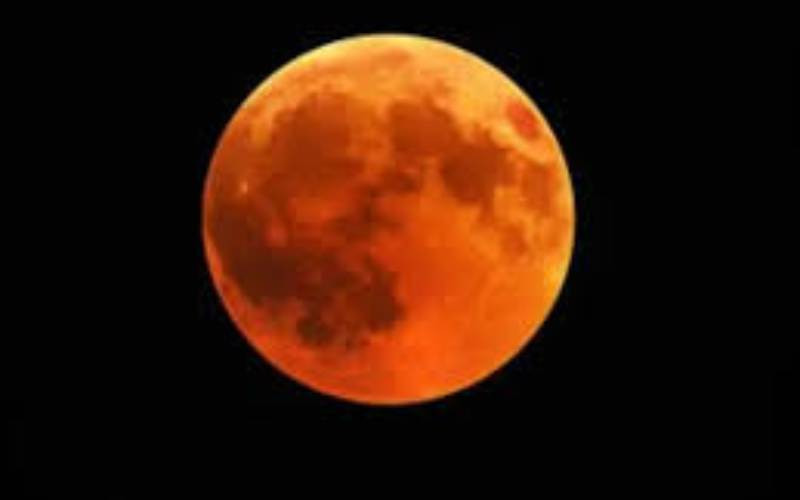
On Sunday, September 7, Kenyans will be treated to one of the most spectacular sights in the night sky, a total lunar eclipse.
The eclipse, commonly known as Blood Moon, occurs when the Earth passes directly between the sun and the moon, casting its shadow across the lunar surface. During this alignment, the moon takes on a deep red or coppery glow, caused by sunlight bending through Earth’s atmosphere.
The eclipse is expected to unfold in four stages. The first is the penumbral eclipse, when the moon enters Earth’s penumbra, causing a subtle shading that is often difficult to notice, almost as if a light cloud is passing across the moon.
This will be followed by the partial eclipse, where the moon begins to darken progressively from one side before entering the total eclipse phase. At this stage, the bright light vanishes and the moon begins to glow with a deep red or coppery colour.
It then reaches the maximum eclipse, when the moon sits entirely in the darkest part of Earth’s shadow. Depending on atmospheric conditions, it may glow a vivid red, a dusky orange, or even a brownish grey. From there, the eclipse gradually fades until the moon resumes its full brilliance.
According to Kenya Space Authority, those in Nairobi will experience the penumbral eclipse at 6:28 p.m., the partial eclipse at 7:27 p.m., and the total eclipse at 8:31 p.m. The maximum eclipse will occur at 9:12 p.m., lasting about 41 minutes before the total eclipse comes to an end.
The partial eclipse will conclude at 10:56 p.m., followed by the penumbral eclipse at 11:55 p.m.
This celestial show will last for more than five hours, with the red moon visible for about one hour and 22 minutes at the peak of the eclipse.
Unlike solar eclipses, it is completely safe to view with the naked eyes as no special glasses or filters are required to see.
The event will be fully visible across the country.







